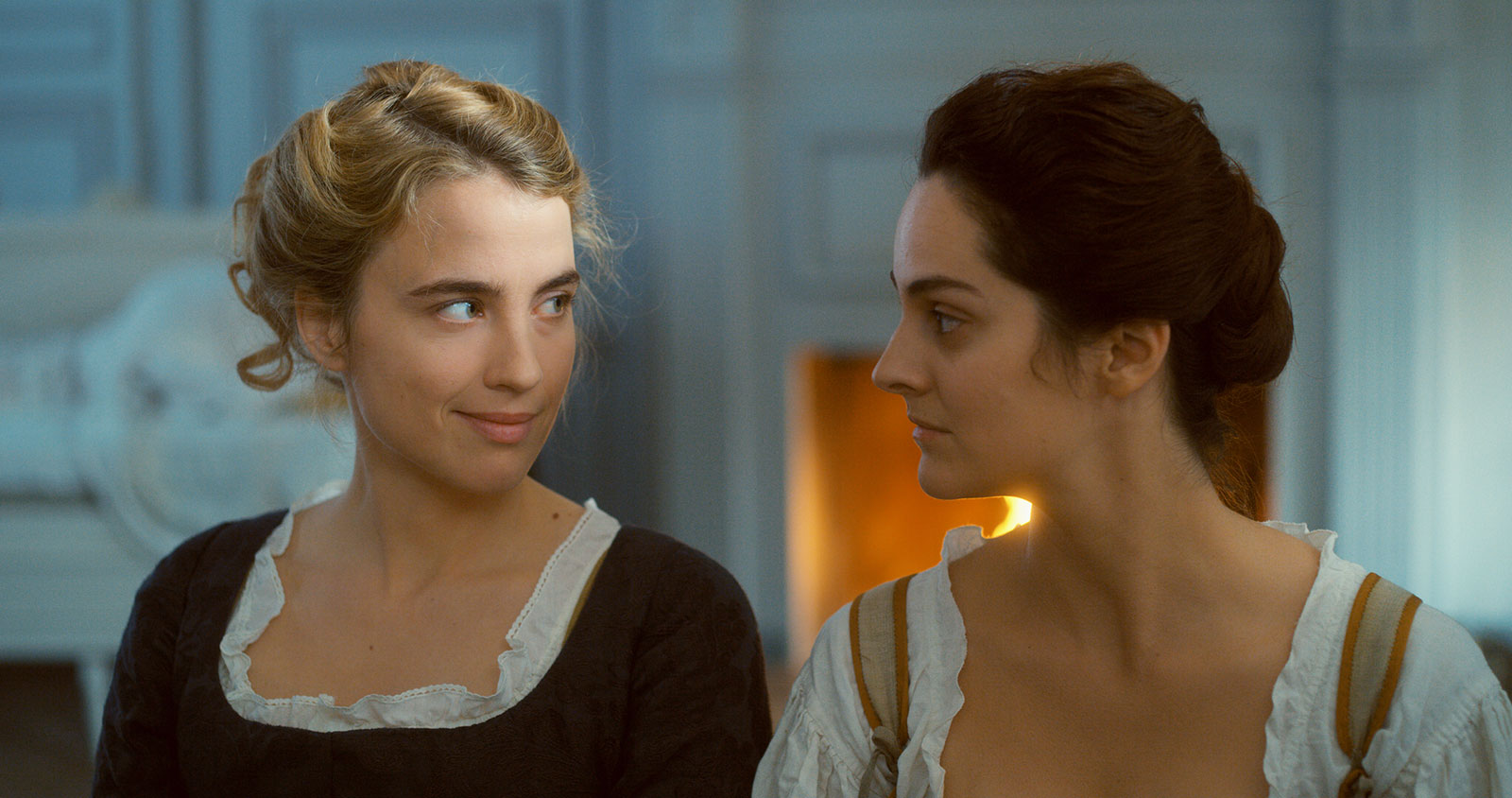Portrait de la jeune fille en feu, Regie: Céline Sciamma, Frankreich 2019

Congratulations to the director for winnig the European University Film Award 2019! To read the Jury Statement please visit the EUFA-Website.
Review by Charles Forbes
A refreshingly honest depiction of romance
by Charles Forbes
Set in 18th-Century Brittany, in a patriarchal society ruled by men, an epic tale takes place between two unlikely female candidates, a painter and her model from two very different classes. Being enclosed within an estate on an island for some days and temporarily removed from the outer-world, the two embark on passionate and unforgettable romance which we, the viewers, are privileged to become witness to.
PORTRAIT OF A LADY ON FIRE focuses on a painter, Marianne (Noémie Merlant), who must fulfil the previously failed task of painting a portrait of Héloïse (Adèle Haenel), the daughter of an upper-class countess (Valeria Golino) who is betrothed to become the wife of a rich Italian nobleman from Milan. Héloïse is a difficult subject who, having recently left a convent due to the untimely death of her sister, has refused to pose for a portrait with the first painter making Marianne’s task a challenging one. To achieve this Marianne must paint Héloïse in secret purely from memory by masquerading as a walking partner during daylight hours. Sciamma unveils Héloïse piece by piece, initially only introducing her to Marianne from a view from behind hidden beneath a hooded cloak which prevents Marianne from a clear view of her face. It is only when Héloïse quickens her pace towards the cliffs during their first encounter that causes the wind to blow her hood away exposing her golden hair and vulnerable face. At once Héloïse and Marianne appear as opposites, with Héloïse’s innocent gaze stemming from her emerald coloured eyes countered by Marianne’s dark wide eyes filled with ambition and intrigue. From the moment the two lock eyes we know that this will become the premise of the film, not just the painter and her subject, rather the looker and her muse.
Sciamma reiterates, as seen in many interviews, the importance of the gaze, particularly the female one. She explains that in many other lesbian films such as Abellalatif Kechiche’s 2013 Palme d’Or winner BLUE IS THE WARMEST COLOUR the gaze comes from a male perspective focusing on the sexuality and physical aspects of a female relationship, forgetting to allow the chemistry to build as it would from a female’s point of view. With extremely long close-up takes of both Marianne and Héloïse during their interactions their sexual tension increases ever so slowly burning like the wick of a candle. After Héloïse finally agrees to pose for Marianne their staring become more intense, more meaningful and ultimately more than just the task of completing the painting.
We are left in silence for most of the film, with only the sounds of crackling fires, waves from the ocean, and the wind coupled by stunning surrounding scenery that presents each frame as its own painting. Sciamma chooses only to include music twice: Para One & Arthur Simonini’s original composition ‘Fugere non possum’ during the scene around the bonfire and Vivaldi’s 2nd violin concerto during the heartfelt final scene, leaving the viewer to sit and study the women as intensely as they study each other. The silences and well-crafted natural lighting provide us with a more honest glimpse into the beauty of the women and the feelings that develop between them without the aid of music. After Héloïse’s mother returns to the mainland leaving the two alone with only the household servant Sophie (Luàna Bajrami) Marianne becomes aware her stare is being returned by her subject as Héloïse reveals that when she is looked at by her painter, where is she to look but right back at her.
Sciamma through her wonderful use of mise-en-scene clothes the modern Marianne in a smouldering red dress in contrast to Héloïse’s traditional forest green dress pre-chosen by her mother making clear that Héloïse has no say in her pre-destined future. Just as Orpheus had the opportunity to save Eurydice from the depths of Hades by not turning around, Marianne provides as Héloïse’s temporary saviour from her inevitable future and unclothes her from society’s expectations, even if it is for just a moment. Sciamma wonderfully depicts the women’s freedom of choice while they reside on the island away from normal societal conventions such as when Sophie choses to abort her baby and never is there any sign of judgement or questioning. Sciamma presents a temporary glimpse into an unbothered world taking place within a time period which for women was far from that. As Marianne says “equality is a pleasant feeling” the three women harmoniously exist in only each other’s company and for once are seen for who they are, not just what they are.
Sciamma provokes and stimulates us for the full 119-minutes runtime, undoubtedly adding to her already successful previous endeavours of GIRLHOOD and WATERLILIES to further raise the benchmark for directors to follow in a now well-accepted LGBTQ genre.